Xw'epiteng Elementary 24-25


OUR CONTEXT
Welcome to Xw'epiteng Elementary: A Place of Learning and Stewardship
Nestled in the heart of the unceded traditional territory of the Semiahmoo First Nation, Xw'epiteng Elementary—meaning "a place of many rabbits"—is more than just a school; it is a vibrant community dedicated to nurturing both the mind and the environment. The school name was gifted to the Surrey School District by Chief Chappell. Our school is located at 18035 8th Ave and thrives on the rich ecosystem of the Ta'talu Watershed.
At Xw'epiteng, we are surrounded by a diverse array of wildlife that enriches our learning environment. In the skies above, majestic eagles, graceful herons, and playful ducks soar alongside black-capped chickadees, hawks, and geese. On the ground, our students see and learn about rabbits, grasshoppers, bumblebees, coyotes, beavers, butterflies, and even cows! The waters teem with life, showcasing Chinook, Coho, and Pink Salmon, as well as salamanders, frogs, and fresh water mussels. The sounds of bumblebees buzzing, hummingbirds flitting, and frogs croaking create a symphony of nature that enhances our educational experience.
Our school is uniquely situated on a wetland that undergoes a natural cycle of flooding and receding in harmony with the 13 phases of the moon. This dynamic environment provides our students with firsthand experience of the interconnectedness of ecosystems. We emphasize the importance of the Ta'talu River as a vital habitat for Chinook Salmon, which in turn supports the survival of the Orca populations in the Salish Sea.

At Xw'epiteng, we are committed to fostering a sense of stewardship among our students. By integrating Semiahmoo Traditional Knowledge with Western knowledge, we empower our children to become responsible caretakers of the land. This educational approach is paramount as we work to unlearn the consumption and extraction habits prevalent in Western society and shift our perspective on wealth and sustainability.
As we continue to explore and learn about our environment, we invite you to join us on this journey of discovery and stewardship. Together, we can cultivate a deeper appreciation for the natural world and inspire future generations to protect and cherish the land we call home. Welcome to Xw'epiteng Elementary, where education meets the beauty of nature!
OUR LEARNERS
Our community culture is Be A Good Ancestor.
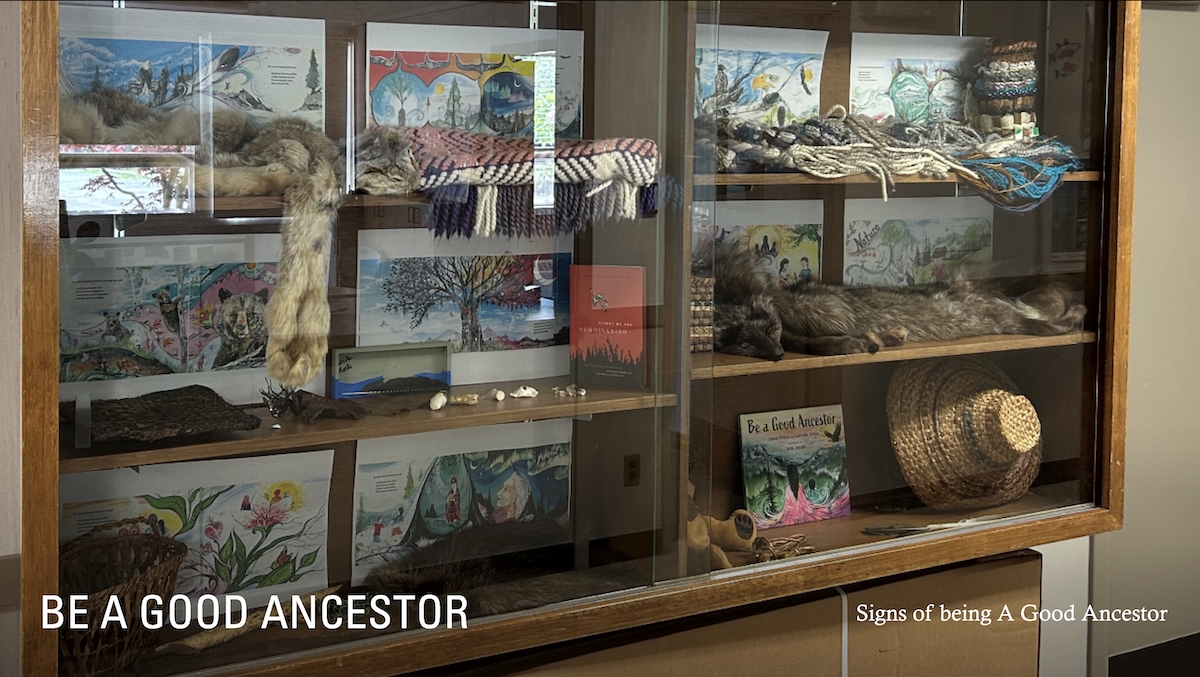
Be a Good Ancestor with water, Raindrops become puddles, Puddles become streams, Streams become rivers, Rivers become life.
Our learners love the Ta'talu River. At the beginning of the year our little ones enjoyed playing in the mud and water but they were struggling sharing the coveted space. Once we taught them about the Chinook in the Ta'talu they quickly became a team of stewards channeling the water to reach the river!
Be a good Ancestor with the land, Seeds become seedlings, Seedlings become trees, Trees become forests, Forests become oxygen.
Our learners learn from the land with a western scientific lens and Coast Salish Semiahmoo traditional knowledge lens..
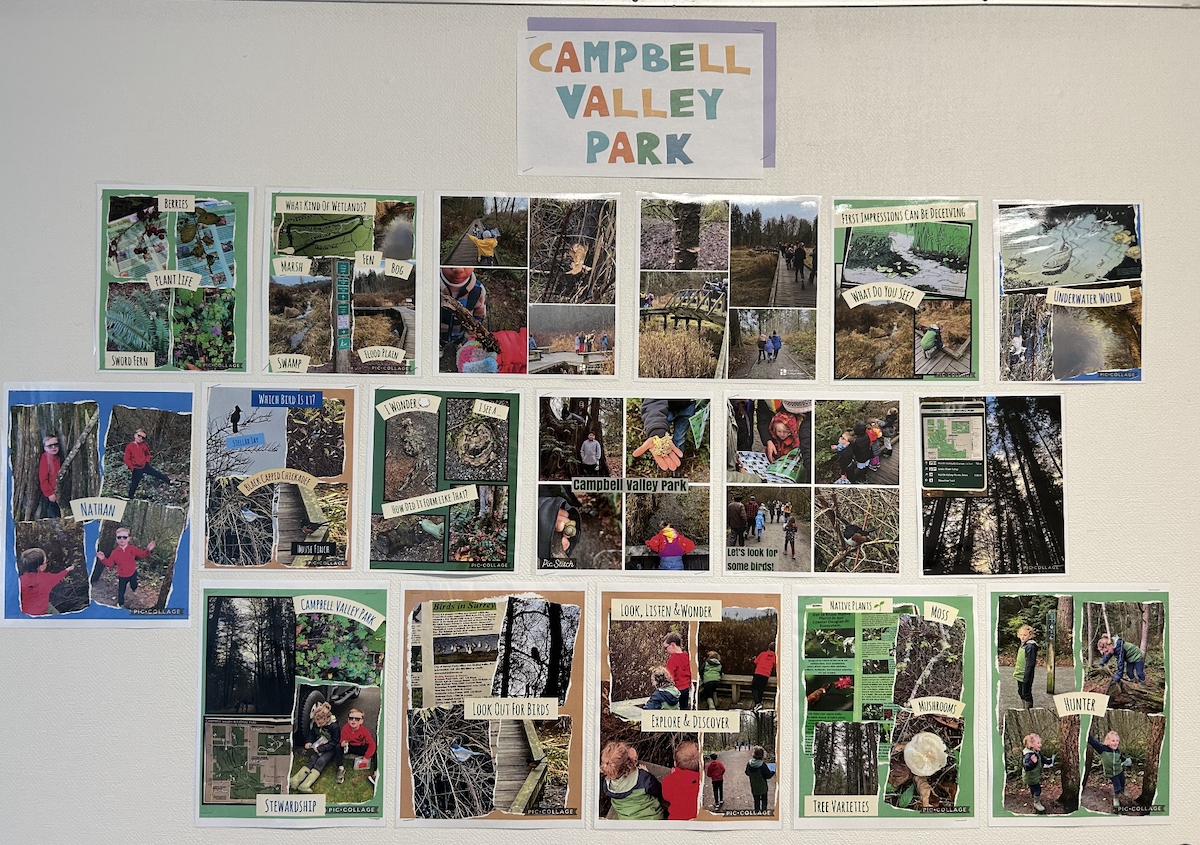
Be a good Ancestor with living things that fly, Eggs become hatchlings, Hatchlings become fledglings, Fledglings become eagles, Eagles become iconic.
Our learners appreciate the eagles who fly over our school and know they are sacred because they fly closest to the ancestors. When we see the eagles flying we know this is a sign of being a good ancestors.
Be a good Ancestor with living things that swim, Eggs become alevins, Alevins become fry, Fry become sockeyes, Sockeyes become nourishment.
Our learners know all about the Ta'talu watershed. They know the Ta'talu connects to Semiahmoo Bay and the Salish Sea. Our Ta'talu watershed is an important Chinook habitat to feed the Orcas in the Salish Sea.
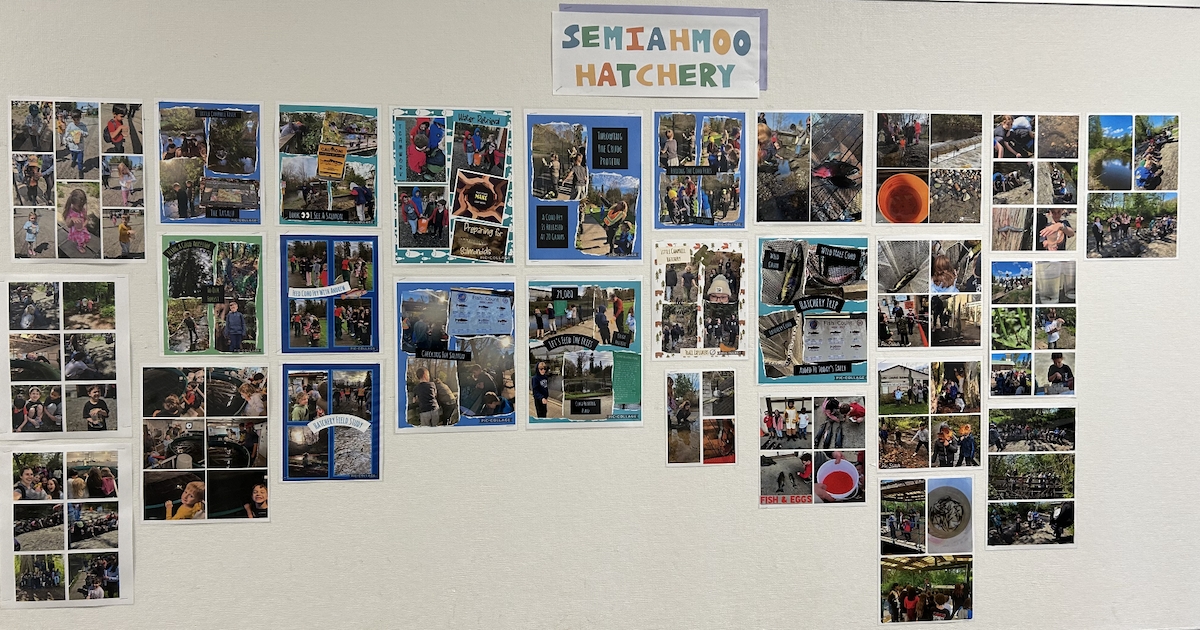
Be a good Ancestor with living things that walk, Newborns become cubs, Cubs become young bears, Young bears become grizzlies, Grizzlies become balance.
Our learners know they are in relation to land and all the creatures that live on the land.
Be a good Ancestor with your neighbours, Neighbours become friends, Friends become communities, Communities become nations, Nations become allies.
Our learners live all over the lower mainland. We are a program of choice where we cultivate strong relationships with our families and community partners like ARocha. Our doors are always open to all of community.
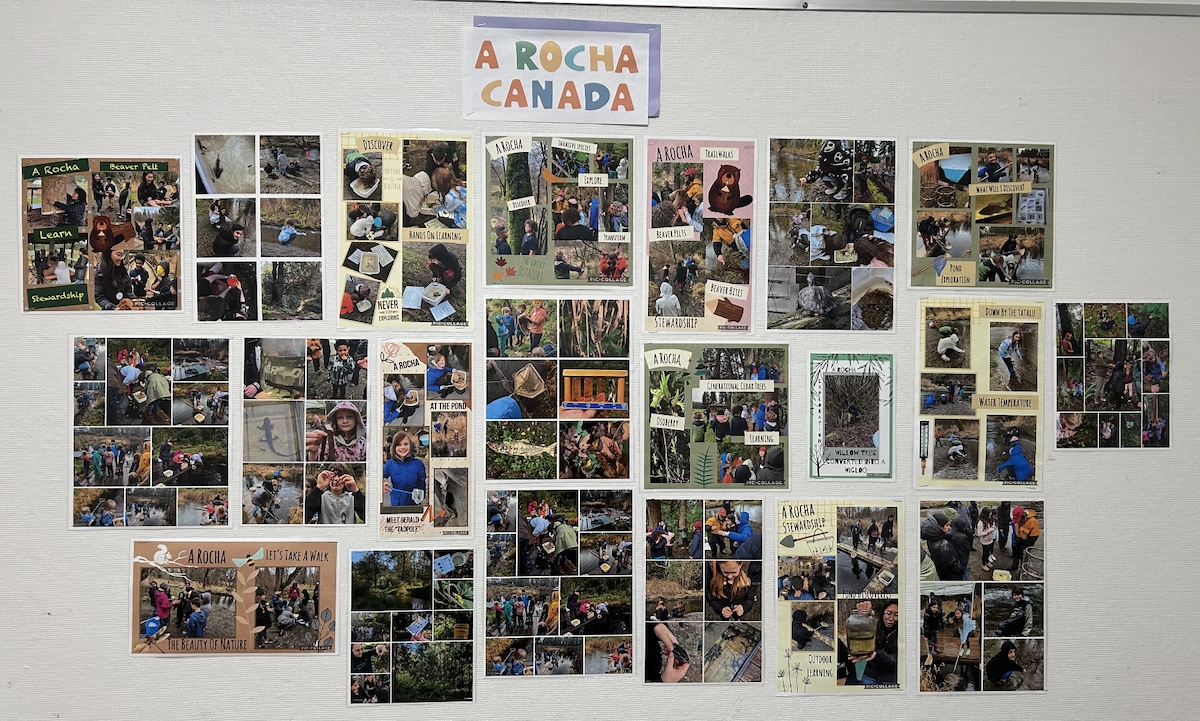
Be a good Ancestor with your thoughts, Thoughts become ideas, Ideas become actions, Actions become movements, Movements become change.
Our learners, want to take care of the land for example, beach clean-ups, stream testing and hatching salmonids in the classroom
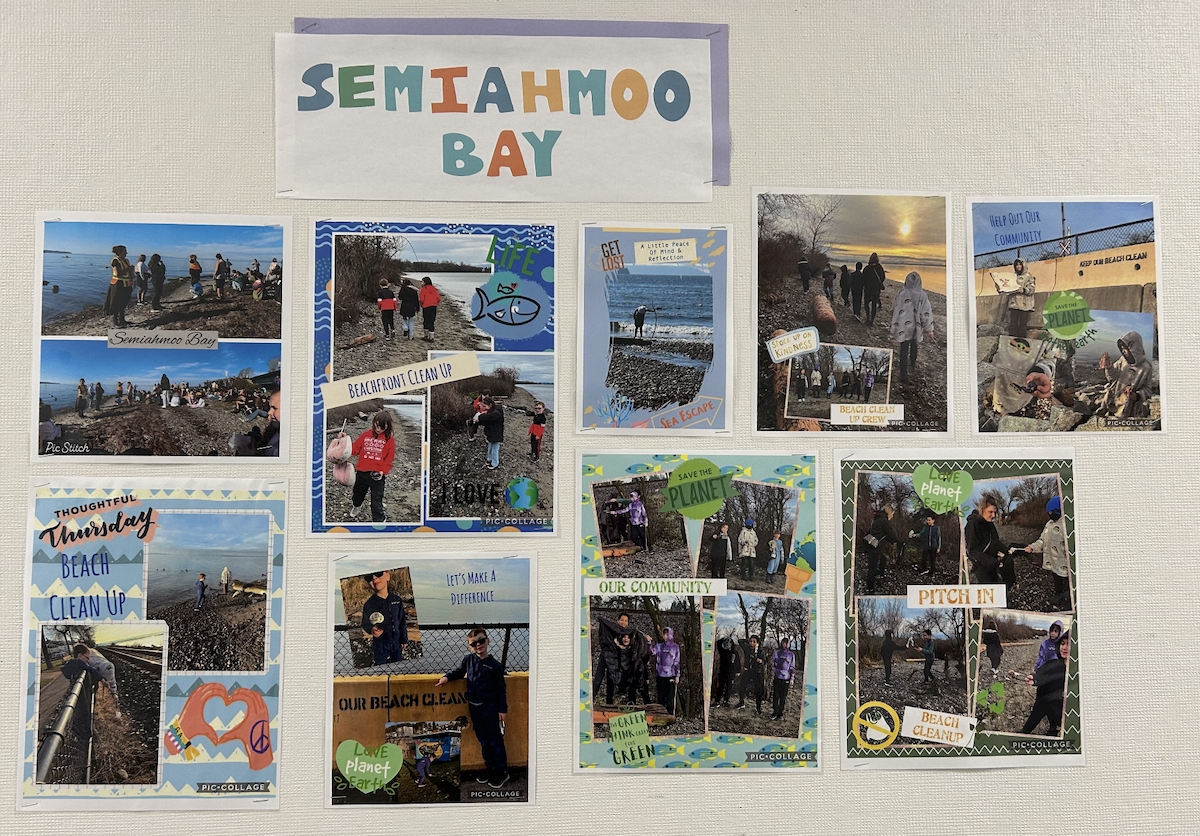
Be a good Ancestor with your words, Words become expressions, Expressions become stories, Stories become narratives, Narratives become truth.
Our learners are in good relation with Semiahmoo First Nation. Our learners value Semiahmoo Traditional Knowledge and want to help restore the shellfish population and the orcas in the Salish sea.
Be a good Ancestor with your feelings, Feelings become compassion, Compassion becomes understanding, Understanding becomes beliefs, Beliefs become values.
Be a good Ancestor with yourself, Children become adults, Adults become leaders, Leaders become Elders, Elders become Ancestors.
Our learners value our community where relationship building is paramount. Our learners feel safe, connected and valued.
Be a Good Ancestor Written by Leona Prince and Gabrielle Prince
OUR FOCUS
Using the Seven Generations: The Aboriginal Lens- Education for Reconciliation framework we focused on Relationships with Sense of Belonging, Culture, Language, Elders, Community, Land, History, and Identity.
Relationship-building requires:
- Understanding protocols for acknowledgment of traditional territories.
- Supporting Indigenous students so that they can be successful.
- Understanding privilege to create equity.
- Bringing together Indigenous students, Elders, and community members.
- Creating space where Indigenous students, Elders, and community members can come together in school.
Our Focus has been Where Do The Numbers Live on the Land?
Learning the diverse traditional knowledge from our local Coast Salish territories and other regions on Turtle Island has been paramount for our learners.
Knowledge Keeper Robbie George from Tsleil-Waututh First Nation taught our intermediate students how to make hand drums.
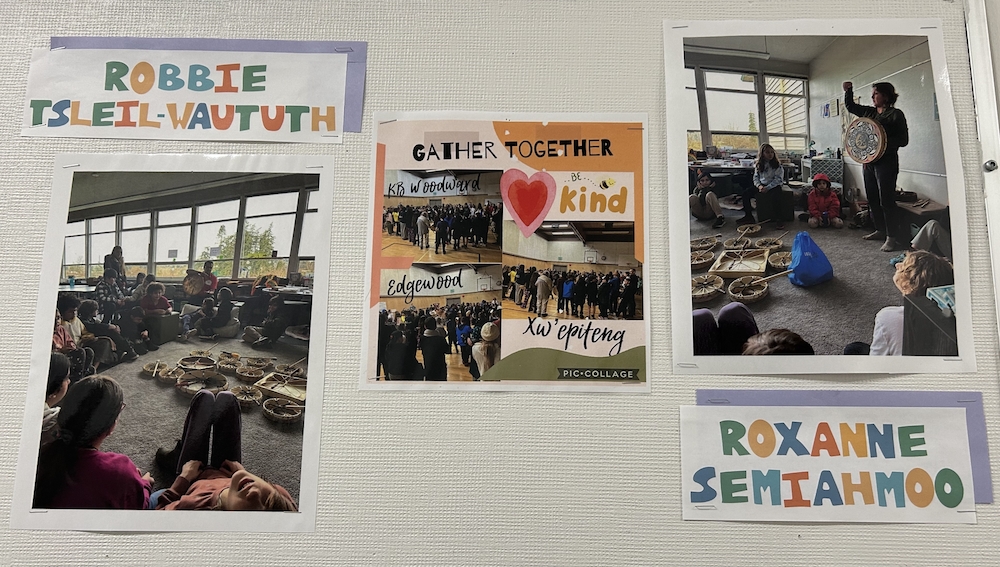
Our students observed Knowledge Keeper Robbie 'using the wing span of his arms to measure the sinew and paracord'. To space out the holes, 'he used the perimeter to make sure the holes were two fingers apart'. In order to attach the hide to the drum frame he first had to 'use a pattern of over and under' weaving the paracord around the perimeter of the drum. The 'he tied the sinew onto the paracord and went directly across the drum frame, looped the sinew into the paracord and went over one. He followed this pattern of 'across and over one' until the hide was secured to the drum frame. Next steps were to 'group the sinew into three groups to make the handles'. Each handle had fourteen sinew cords. Once they were pulled into the three groups, an additional evolved from the pulling, 'making 4 quadrants'.
Robbie taught all of us Kwenmuth Slalom - Coast Salish Prayer Song written by the late Chief Dan George and Robbie's Great Uncle. The song is not written down, instead it uses a pattern where you sing the first part twice and then sing the second part and you repeat this pattern three times to conclude with the 4th part. The drum beat follows a four pattern beat. Roxanne Charles from Semiahmoo Nation has taught us the number 4 is a very important number in Coast Salish cultures.
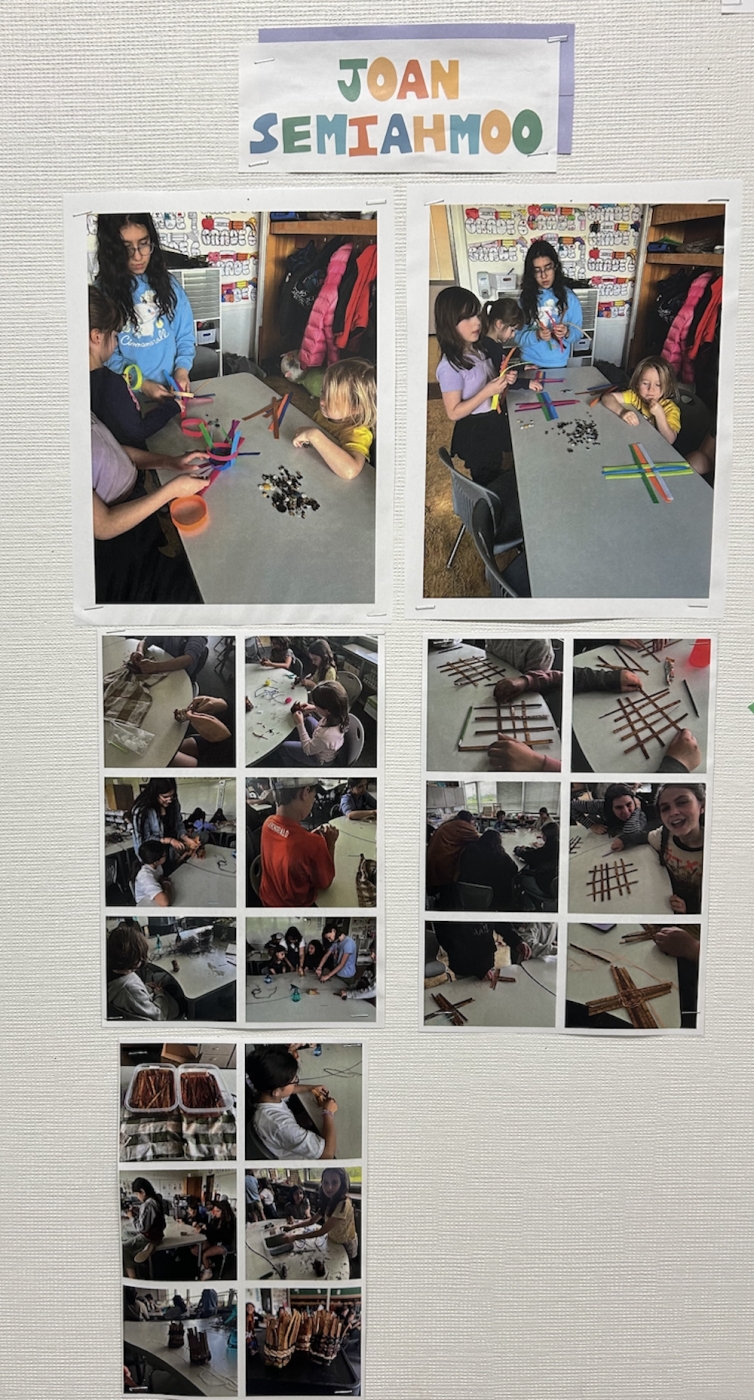
Knoledge Keeper Joan Williams from Semiahmoo First Nation taught our little buddies with the help of our big buddies how to weave with felt. They noticed 'the strips of felt had been cut to a specifically measured length and width'. Once Joan demonstrated how to weave they 'started using a pattern of over and under' to connect the felt strips together. One observation made by a big buddy was, 'the tighter the weave, the smaller the size of object the basket could carry'. A few months later, the intermediate students learned to weave cedar baskets and this is a much harder skill set! I am very proud of the students who persevered and eventually learned the pattern of 'one cedar strip forward, one cedar strip behind, twist, repeat'. The students created beautiful baskets to give away at our Naming Ceremony. Honouring the Semiahmoo way of being; give away whatever you make for the first time, because the true gift is the knowledge to know how to make a basket.

Knowledge Keepers Dennis Leon from Kwantlen and Sts'ales First Nation and Lee Prevost from Sts'ales First Nation shared their knowledge about the Sockeye salmon in the Sto:lo river. Semiahmoo First Nation Roxanne Charles shared the important trading relationships with Kwantlen and other Sto:lo nations because they were cut off from their Sockeye Salmon routes when the Canada/USA border was put into place. Our students have learned a lot about the Ta'talu watershed and the importance of the Chinook salmon for the Orcas in the Salish Sea. We got the opportunity to host 'Salmonids in the Classroom'. Students witness the retrieval of the eggs (5,000-10,000) at the Little Campbell River Hatchery. Coho (this species is more resilient for this project compared to the Chinook) eggs were delivered to us in January. 'We watched the eggs hatch into Alevins and transform into frys!' Students returned the frys to the Ta'talu prior to Spring Break. During this experience students had to 'record Accumulated Thermal Units and maintain a temperature between 6 - 8 degrees Celsius'. They 'recorded the number of days for each phase of the cycles. They also kept track of how many eggs(55) we started with and how many survived to be returned to the Ta'talu (52)!'

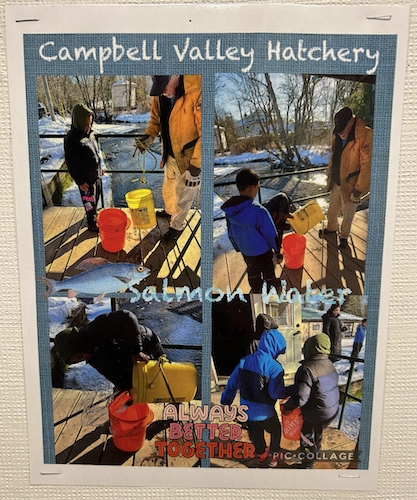
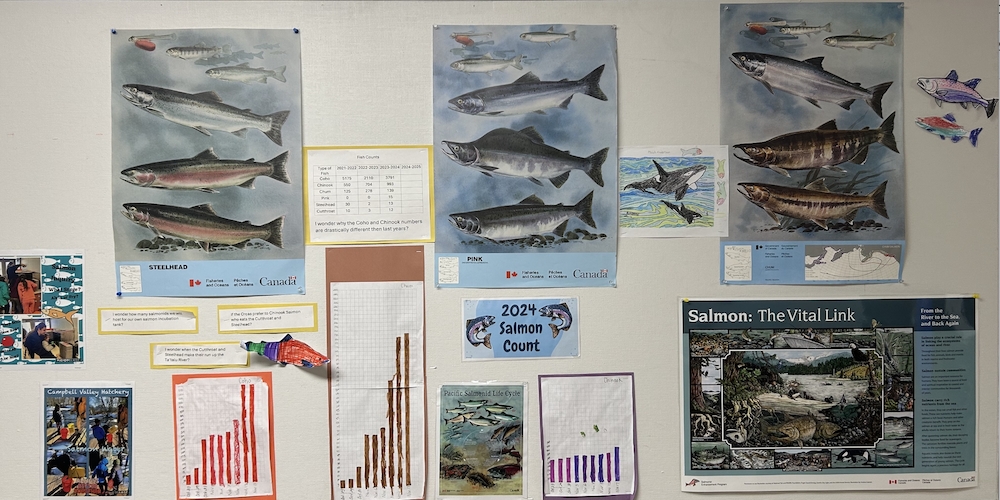
As mentioned above, the Semiahmoo Hatchery is one of our community partners. During the spawning season, our students regularly visited the hatchery to record the numbers of the Pink, Chinook, Coho and Chum swimming up the Ta'talu. Then using bar graphs, students recorded the numbers on our Salmon bulletin board.
OUR NEXT STEPS
Next year our focus will continue to be Seven Generations: The Aboriginal Lens- Education for Reconciliation frame work. Our specific focus will be Respect.
Respect requires:
- Listening to and learning from the voices that have been silenced.
- Learning from the stories and experiences of Indigenous Knowledge Keepers
- Creating a safe space where everyone belongs in the circle.
- Valuing multiple knowledge systems, diverse cultures and perspectives.
Our focus will continue to be numeracy:
Communicate
- concretely, pictorially, symbolically, and by using spoken or written language to express, describe, explain, justify, and apply mathematical ideas; may use technology such as screencasting apps, digital photos
Connect mathematical concepts to each other and to other areas and personal interests
- to develop a sense of how mathematics helps us understand ourselves and the world around us (e.g., daily activities, local and traditional practices, the environment, popular media and news events, social justice, and cross-curricular integration)
Incorporate
- Invite local First Peoples Elders and knowledge keepers to share their knowledge.
First Peoples worldviews and perspectives to make connections to mathematical concepts
Using the strategy of Whole Number Talks students will demonstrate their understanding by teaching their families how to create, play or sing the traditional Indigenous knowledge such as baskets, songs, or drum making.
